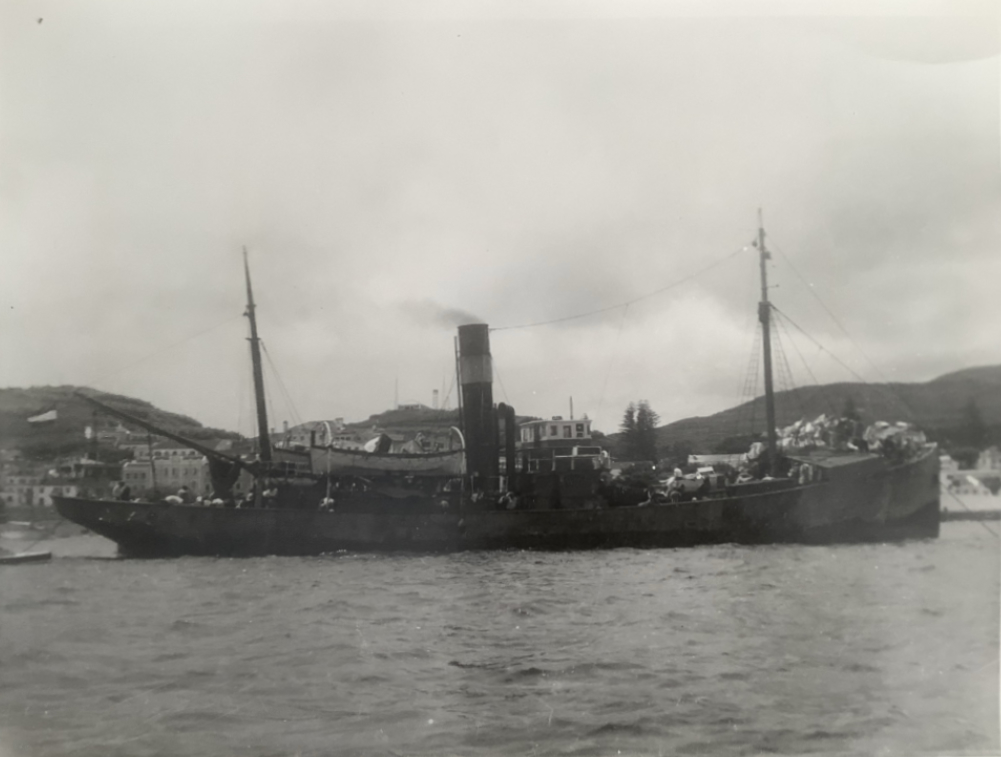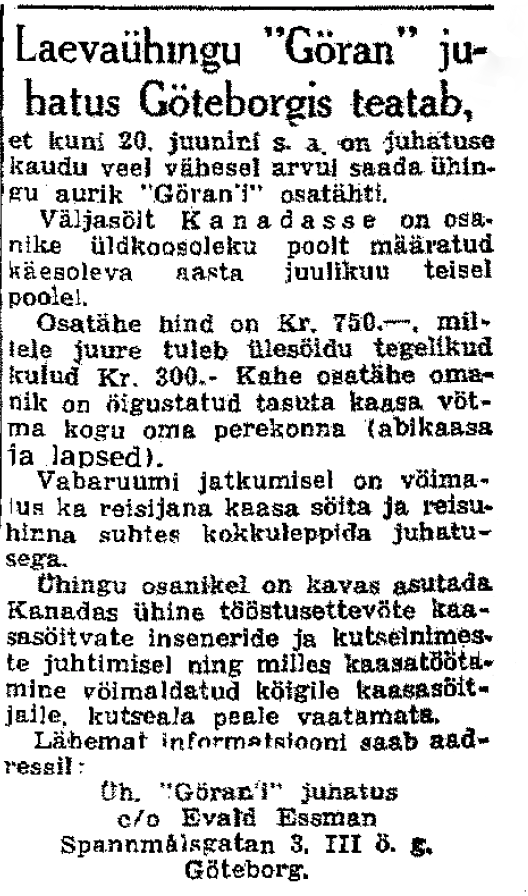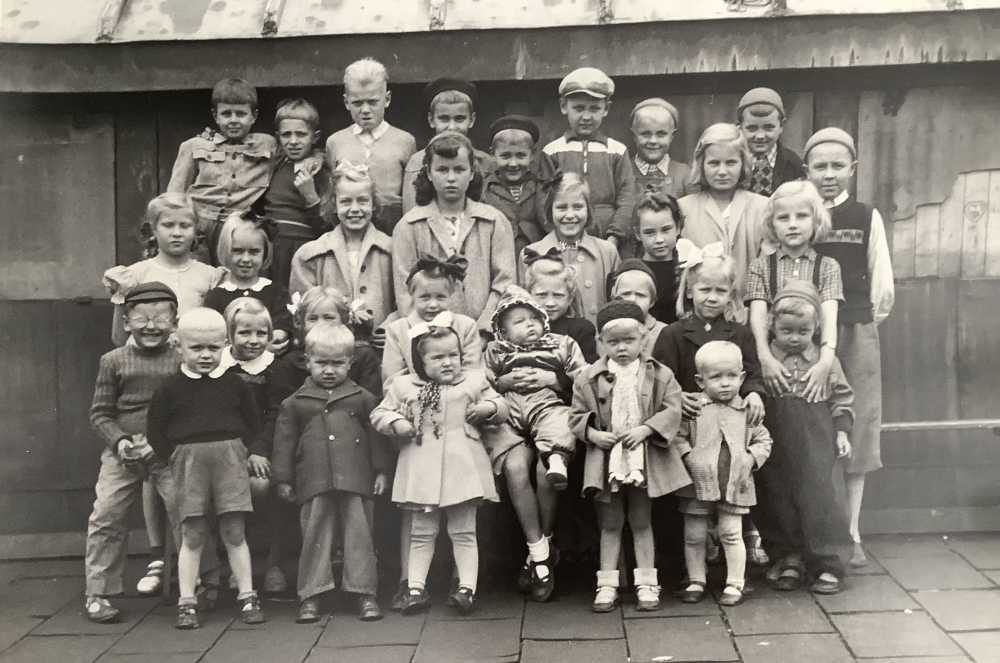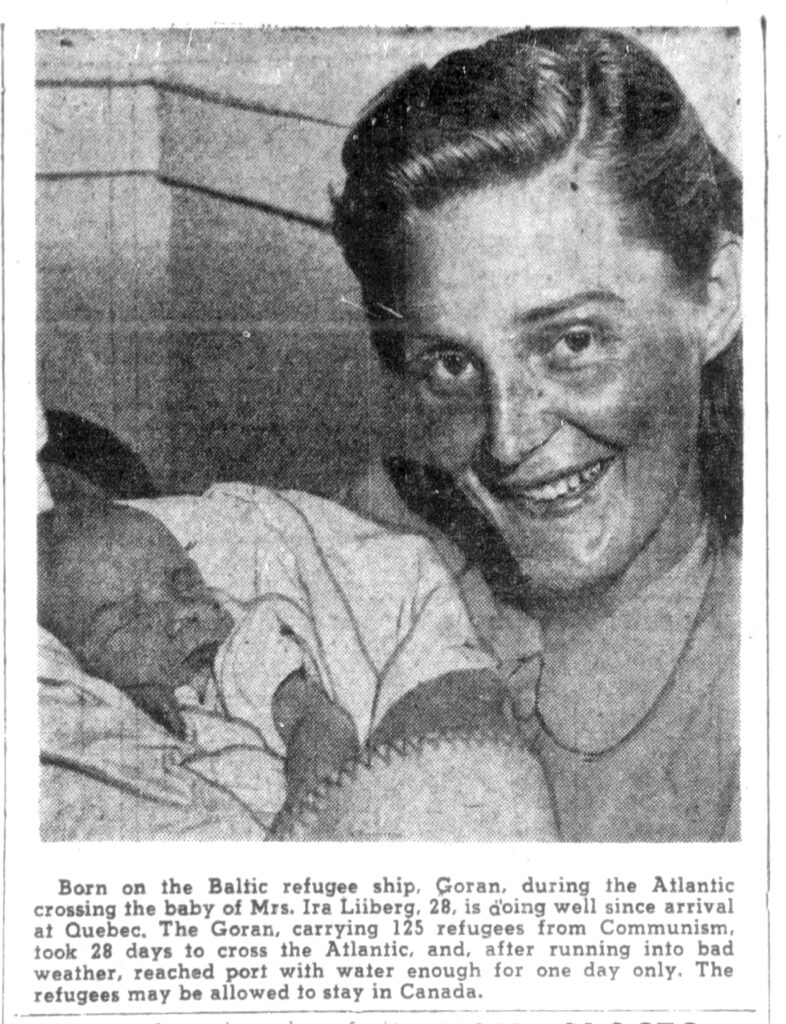Boats

The Göran fishing trawler
Göran
The Göran, a British fishing trawler, was the last Viking boat to transport Estonian refugees to Canada.
On June 15, 1949, Stockholms-Tidningen Eestlastele announced that it would be possible to buy passage on board the Göran until June 20 for a departure date after July. Each share cost 750 Swedish kronor, plus an additional 300 kronor for passage-related expenses. The purchase of two shares covered a refugee’s “wife and family.”
However, Swedish authorities barred the boat from leaving the port in Göteborg and refugees who wanted to go to Canada joined the larger Sarabande and Victory ships. But the boat’s organizer, engineer A. Kasak, didn’t give up and tried again the following year.

Advertisement to buy passage on the Göran. Stockholms-Tidningen Eestlastele, June 14, 1949
After being stopped again on July 1, 1950, the Göran finally left Göteborg on July 12 with 30 passengers, the maximum permitted by the Swedish authorities. But many more refugees had bought passage, and they secretly followed the Göran on a pleasure boat and boarded her in the darkness outside Swedish territorial waters. Soon there were 122 passengers on board: 41 men, 39 women, and 42 children. Bruno Marand was captain, Evald Koppel was the ship’s mate, and there were 13 crew members.
Following the southern route across the Atlantic Ocean, the Göran made its first stop July 29 at the port of Faial island in the Azores. After receiving a warm welcome from local residents and buying coal, the Göran continued its journey, reaching Bathurst, New Brunswick, in Canada on August 8, after sending out distress signals. Captain Marand described it as the “roughest crossing” of his long maritime career. The ship had less than a day of food and fresh water left.
The Göran arrived with 123 passengers, one more than when it started, because Asta Liiberg had given birth to a daughter on board. A Catholic priest boarded the ship to baptize the baby, but no one was allowed to disembark. The Göran was directed to Quebec City, where it docked on August 12, 1950, after its 28-day journey.

Children from the Göran at the immigration holding center in Quebec City, Canada. Jaan Arro, 6, is in the top row, far right, next to his brother, Rein. Valdeko Novek, wearing glasses, is at the bottom left corner.
The boat’s arrival generated human interest observations from Canadian journalists:
“A male passenger on the stern of the ship hastily brushed lather on his face and began to shave. ‘Because I want to look good when the immigration people look at me.’ He shouted this was the happiest day of his life.”
Toronto Daily Star, August 12, 1950
“Most of the refugees were well dressed. The younger women wore stylish clothes and some wearing high-heeled shoes had to step carefully along railroad tracks on the way to detention quarters.”
Waterloo Region Record, August 12, 1950

The Sault Star, August 17, 1950
Canadian authorities were prepared for the Göran’s refugees and placed them in quarantine camps until December 1950, when they were admitted to Canada.
Known crew and passengers:
- Captain Bruno Marand
- Evald Koppel
- A. Kasak
- Asta (Ira) Liiberg, 28, and daughter Maria Angela
- Rein and Jaan Arro, 6
- Valdeko Novek
- Asta Rago and daughters Mary Lus and Anna May
- Krista Toomsalu, 6

The Göran docked in Bathurst, New Brunswick, after its stormy 28-day trip. The Sun Times, August 12, 1950
